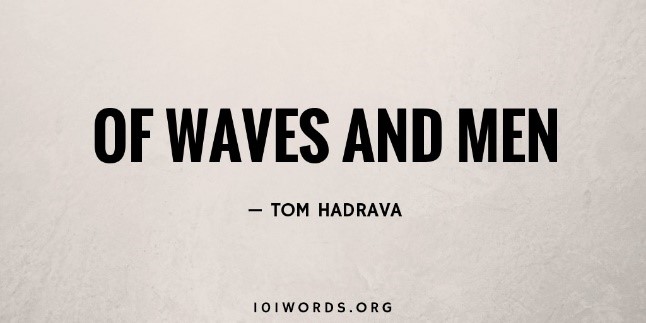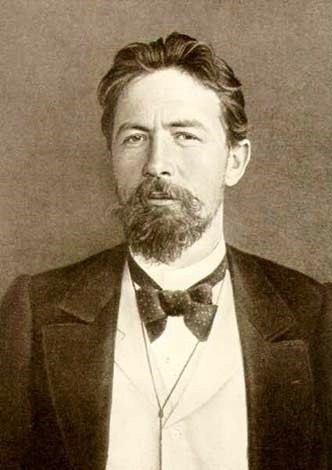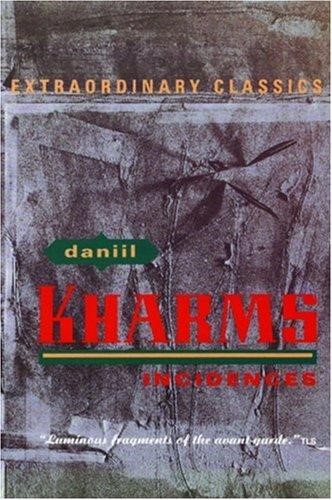
Handbook-subarticles
Book title
One Entry Per Person
Author
Tom Hadrava
Bibliographic information
http://dailysciencefiction.com/fantasy/fantasy/tom-hadrava/one-entry-per-person
Links (adaptations, reviews, full texts etc.)
http://dailysciencefiction.com/fantasy/fantasy/tom-hadrava/one-entry-per-person
Theme
A moment in one's life
Short summary
A man comes home after a longer time and looks around. A detailed description of the moment - the place and the feelings.
Why is the story appropriate for the targeted groups of RSP readers?
It reflects social and cultural themes.
What are the distinguished readers interests reflected by this book/story?
-
Why is this story motivational for the pupils?
A brisk contemplation of life in today's world. Might bring philosophical questions of the purpose of life which could be interesting for teenagers.
Is there a historical, political, multi/inter cultural, migrant or similar context recognized in this book/story?
-
Is there a principle of inclusion reflected in this book/story and does it promotes understanding of cultural diversities and heritage?
The importance of having home.
Title of Activity
Of Waves and Men
Description of educational activity
Duration: 90 minutes
Pupils’ age: 15-19
Organization of the class of pupils: individual work
The aim of the lesson: The aim of the lesson is to improve the reading literacy of the students. To improve their fantasy and imagination. Another goal is to learn to guess the meaning of the words from the context and according to their sound.
Support materials: The text of the story.
Activities:
1. The students get the title of the story. They think about associations connected with the title. They try to predict the sort of the story, its narrative voice, mood, tone, genre. They come with various connotations of the word wave.
2. The students read the story, identify the words they do not understand and try to guess their meaning.
3. The students are asked to count the number of the words.
4. The students think about the tools of language used to convey the association with water.
5. The students role-play the different types of wave creatures described in the text.
6. They are asked to identify other meanings in the text apart from the literal fantasy ones.
7. The students read the story aloud trying to express wave/water pattern as best as possible.
8. The students think of other examples of fights between mankind and the elements and try to express them in fantasy settings.
9. The students create another type of a wave creature and describe it in 20 words. Then they gradually reduce the number of the words down to 15, 8, and finally 3.
10. Home assignment: write a 101-word story.
Evaluation and assessment method:
- Teacher makes sure that all the students are involved in discussions and each of them completes the given tasks.
- In order to evaluate and assess the effective impact of the previous activities upon the students, they are asked to write their own story as their homework.
Effect of the activity on RSP reading:
Practices that support students´ fantasy and imagination.
Connection to curriculum
Grade: 1 – 4 grade of secondary studies
Curriculum: The study of literature is focused on reading and comprehending literary texts of historical and cultural importance and relevancy either in the world or Czech literature. Students are taught to work with texts and information in different ways, to adopt the processes of analysis, synthesis, induction, deduction, generalization, abstraction, specification, comparison, organization, selection. The students should be able to interpret, summarize and evaluate the texts.
Knowledge:
- Develop reading fluency.
- Understand metaphors.
- Improve reading comprehension.
Skills:
- Develops intonation, working with voice in general.
- Interpretation
- Supports fantasy and imagination
- Distinguish reality and fantasy
- Make predictions
Competences:
- Make connections between fiction and real life or personal experiences
- Be able to visualise material read
- Follow specific instructions and conventions
- Support and justify an opinion
Bibliographic reference to be used during the activity
Tom Hadrava
Publisher: http://dailysciencefiction.com
Year of issue: 2016
Results
The expected outcomes of the lesson are:
- The students will be able to guess the meaning of the words based on the sound.
- Find meanings in metaphorical language.
- To offer observations, make connections, speculate, interpret, and raise questions.
Recommendations
Both the teaching method and the text can help in increasing students’ interest in reading. This text tells a story of warriors fighting a rough sea which is quite attractive setting for young readers. The teacher monitors the students to make sure they all are involved in the discussions and complete the tasks given to them.
Book title
Of Waves and Men
Author
Tom Hadrava

Bibliographic information
https://www.101words.org/of-waves-and-men/
Links (adaptations, reviews, full texts etc.)
https://www.101words.org/of-waves-and-men/
Theme
Men vs. the sea
Short summary
An imaginative description of men encountering the sea.
Why is the story appropriate for the targeted groups of RSP readers?
It reflects political, historical and social themes, refers to current migrant situation
What are the distinguished readers interests reflected by this book/story?
-
Why is this story motivational for the pupils?
A modern story, different than the others. Awakes the reader's fantasy imagination.
Is there a historical, political, multi/inter cultural, migrant or similar context recognized in this book/story?
Could be seen as a migrant's journey across the sea.
Is there a principle of inclusion reflected in this book/story and does it promotes understanding of cultural diversities and heritage?
Could be interpreted in many different ways.
Title of Activity
Fat and Thin
Description of educational activity
Duration: 90 minutes
Pupils’ age: 15-19
Organization of the class of pupils: group work
The aim of the lesson: The aim of the lesson is to improve the reading literacy of the students. To improve their reading comprehension and to be able to understand and describe characters. Another goal is to make the pupils develop their skill of using the appropriate language structures to express their opinions.
Support materials: The text of the story.
Activities:
- The students individually complete the predictions for themselves in 20-year time.
- The students think about the social ladder and the factors creating one’s position in such a ladder. They discuss their ideas in small groups.
- Discussion, the whole group: climbing the social ladder.
- The students are given the text and they are supposed to follow possible changes in the characters’ behaviour.
- Groups of four. The students create three living pictures illustrating the development in the characters’ behaviour. The activity is followed by a discussion on the characters and the social ladder.
- Students work in groups of four and think about some situations when one needs help from the others. They illustrate some of the situations using drama.
Evaluation and assessment method:
- Throughout the lesson, ensure that your students are backing up their choices with accurate supporting details.
- Teacher's observations of student preparedness, and participation in group activities.
- In order to evaluate and assess the effective impact of the previous activities upon the students, they could be asked to write a short formal letter – a letter of application in which they include one of the model situations.
Effect of the activity on RSP reading: Practices that support students´ choice, collaboration, and shared control of learning outcomes can be linked to self-expressed interest in reading and engaged reading behaviour. Teachers can organize reading instruction to develop self-efficiency, competence, and engagement in teenage students.
Connection to curriculum
Grade: 1 – 4 grade of secondary studies
Curriculum: The study of literature is focused on reading and comprehending literary texts of historical and cultural importance and relevancy either in the world or Czech literature. Students are taught to work with texts and information in different ways, to adopt the processes of analysis, synthesis, induction, deduction, generalization, abstraction, specification, comparison, organization, selection. The students should be able to interpret, summarize and evaluate the texts.
Knowledge:
- Understand the stages of development of a hero, common in almost all books
- Develop reading fluency
- Improve reading comprehension
- Organize information in a specific way
Skills:
- Use basic drama techniques
- Create dialogues
- Make predictions, deductions, generalization
- Compare and contrast
- Summarize
- Work effectively in groups, respecting others
Competences:
- Make connections between fiction and real life or personal experience
- Be able to visualize material read
- Follow specific instructions and conventions
- Support and justify an opinion
Bibliographic reference to be used during the activity
Anton Chekov
Love and other stories
Publisher: The University of Adelaide Library (e-book)
ISBN:
Page count:
Year of issue: 2014
Results
The expected outcomes of the lesson are:
- The students think about their future, are able to make predictions and support them.
- The students will be able to illustrate their understanding using basic drama techniques.
- To offer observations, make connections, speculate, interpret, and raise questions in response to the excerpts.
Recommendations
Both the teaching method and the text can help in increasing students’ interest in reading. This text shows a change of a character’s behaviour during a short time. The teacher monitors the students to make sure they cooperate effectively.
Book title
Love and other stories
Author
Anton Chekhov

Bibliographic information
The University of Adelaide Library, 2014
Links (adaptations, reviews, full texts etc.)
http://www.polyglut.net/docs/fatthin.pdf https://www.youtube.com/watch?v=Ah097eYgjO8
Theme
Social differences, using other people, pursuing a career in life
Short summary
Old friends meet together after some time and when one realizes the other one has reached a high position in his life he tries to flatter him
Why is the story appropriate for the targeted groups of RSP readers?
It is simple, it reflects readers' interests, it reflects social themes, social diversities
What are the distinguished readers interests reflected by this book/story?
-
Why is this story motivational for the pupils?
The story deals with themes teenagers are interested in like pursuing a career in life, earning money, getting high in society and also peoples' relationships. Follows the national curriculum - interpersonal relationships, finding a job.
Is there a historical, political, multi/inter cultural, migrant or similar context recognized in this book/story?
We can find there a political context - climbing up the social ladder, helping friends, turning back on them etc.
Is there a principle of inclusion reflected in this book/story and does it promotes understanding of cultural diversities and heritage?
It deals with the importance of being accepted by society.
Title of Activity
The Redhead
Description of educational activity
Duration: 90 minutes
Pupils’ age: 15-19
Organization of the class of pupils: individual/pair work
The aim of the lesson: The aim of the lesson is to improve the reading literacy of the students. To be able to describe a character of a person and find possible reasons of ones’ behaviour. The students will recognize the importance of social apprehension and every single individuality within society.
Support materials:
- Text of the story
- The circle social diagram
- The drawing of a person
Activities:
- The students complete the circle social diagram and discuss them in pairs. They speak about the importance of every circle.
- Students in pairs discuss why, where, and how people meet new people. They write a short dialogue describing a first meeting of two people. The whole group discuss if it is possible to recognize the people who we can trust.
- The students are asked what it means for them when we say that somebody is ‘useful’.
- The students read the story and complete the drawing of a person according to the description of the main character.
- Each student introduces their image of the main character along with their personal feeling of the character.
- The whole group discuss a possible relationship between the author and the main character and the character’s personality and personal life.
- Afterwards each pair thinks of people from different social circles living lonely lives and the reasons of that. The ideas are then shared.
- The last topic to be discussed is wasting time. Everyone thinks of moments in their lives when they ‘waste time’ and why.
Evaluation and assessment method:
- Throughout the lesson, ensure that your students are backing up their choices with accurate supporting details.
- The teachers should encourage the students to express their opinions. Every idea is subjective, nothing is really correct or wrong.
- In order to evaluate and assess the effective impact, the activities should be subsequently completed by each student and each student should actively participate in the discussion.
Effect of the activity on RSP reading:
Finding that their comprehension is positively evaluated and their opinions discussed the students lose the previous resist towards reading and gain some confidence.
Connection to curriculum
Grade: 1 – 4 grade of secondary studies
Curriculum: The study of literature is focused on reading and comprehending literary texts of historical and cultural importance and relevancy either in the world or Czech literature. Students are taught to work with texts and information in different ways, to adopt the processes of analysis, synthesis, induction, deduction, generalization, abstraction, specification, comparison, organization, selection. The students should be able to interpret, summarize and evaluate the texts.
Knowledge:
- Describing a character
- Develop reading fluency
- Improve reading comprehension
- Organise information in a specific way
Skills:
- Deduction, generalization, abstraction, interpretation
- Use illustrations
- Compare and contrast
- Summarize
- Work effectively in groups, respecting others
Competences:
- Make connections between fiction and real life or personal experiences
- Be able to visualise material read
- Follow specific instructions and conventions
- Evaluate evidence
- Support and justify an opinion
Bibliographic reference to be used during the activity
Kharms Daniil
Incidences
Publisher: Serpent’s Tail
ISBN: 1852423064
Page count:
Year of issue: 1993

Digital resources
The full text can be found on http://danielcharms.com/charms/plays/play1.html and a video on https://www.youtube.com/watch?v=Sx21o6GRAfw.
Results
The expected outcomes of the lesson are:
- The students are able to work with their imagination.
- They are able to support their opinions with arguments.
- They are able to see the facts in context, speculate, interpret, and raise questions in response to different descriptions of the character.
Recommendations
Both the teaching method and the text can help in increasing students’ interest in reading. The character is a total loser and the students find it easy to feel for him. The teacher monitors the students to make sure they follow the activities and participate in the discussion.
Contact
X gimnazija ''Ivan Supek''
Ul. Vjekoslava Klaića 7
10000
Zagreb
E-mail: partners@handbook4rspreaders.org










